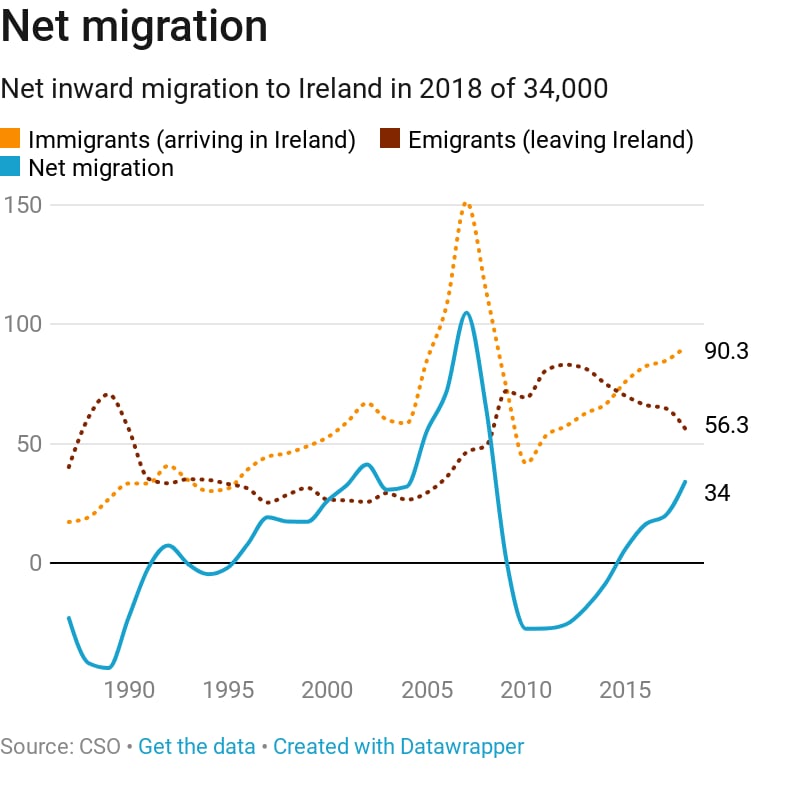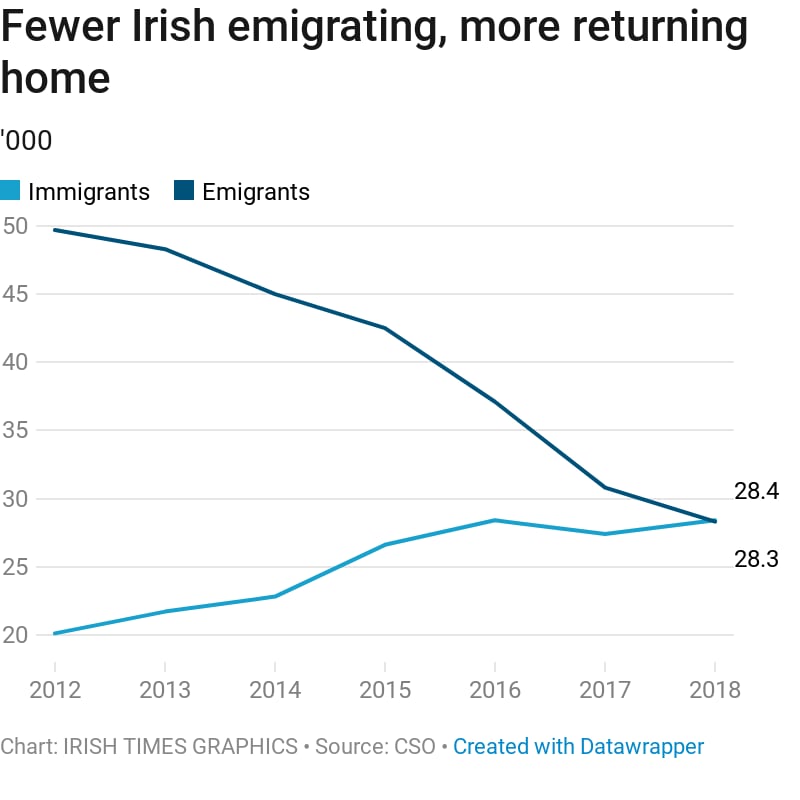The number of Irish people returning to live in Ireland from abroad has overtaken those emigrating for the first time in 10 years, while the number of people at work in the State is now almost 20,000 higher than it was before the crash.
New figures from the Central Statistics Office show the highest level of immigration overall since 2008, with 90,300 people moving here in the 12 months to April, up 6.7 per cent on the previous year.
Emigration is also at its lowest since 2008, with 56,300 leaving in the 12-month period, a drop of 13 per cent on the previous year, and 32 per cent lower than the peak in 2012.
The ongoing tightening of the Irish labour market is attracting migrants into the country at rates not seen in a decade
With the economy approaching full employment, Ireland is proving attractive again for Irish emigrants, with 28,400 moving back here from abroad, up 1,000 on the previous 12 months. The numbers emigrating dropped 8.1 per cent, to 28,300, resulting in a net inward migration total of about 100 people.

Net inward migration among non-Irish nationals increased even more substantially, from 23,200 in 2016-2017 to 33,900 in 2017-2018.
“The ongoing tightening of the Irish labour market is attracting migrants into the country at rates not seen in a decade,” Goodbody analyst Dermot O’Leary said.
The so-called “brain drain”, which sapped graduates from Ireland during the recession, has now reversed, with 49,200 immigrants with a third-level qualification arriving in the period, compared with 26,500 who emigrated, a net gain of 22,700 graduates.
‘Right track’
Tweeting a link to The Irish Times report on the CSO migration figures on Tuesday, Taoiseach Leo Varadkar said: "Nine years after crash and the pain of forced emigration, more Irish citizens [are] now coming home than moving abroad. We're on the right track. But there's more to do."
Youth emigration has seen the most significant fall since the height of the recession
The figures coincided with the CSO’s latest Labour Force Survey, which show there were 2.255 million people at work in the economy in the second quarter of 2018, up 3.4 per cent or 74,100 year on year.
While employment of Irish nationals grew 2.3 per cent, employment of foreign nationals grew 9.7 per cent.

Youth emigration has seen the most significant fall since the height of the recession. Just 12,500 people in the 15-24 age group left in the year to April 2018, down from 34,500 in 2011.
“This trend is extremely positive and signals the need for greater investment in housing to sustain a large and growing youth population,” said Marie-Claire McAleer of the National Youth Council of Ireland.
Down and under
The popularity of Australia among migrants from Ireland continues to fall, with just 4,500 people of all nationalities moving there in the 12-month timeframe, down from 5,300 the previous year and 17,400 in 2012, when numbers peaked.
Migration to the UK was also down, from 12,100 to 11,400. Canada was the only country or region that saw a rise in migration from Ireland, from 3,700 people to 3,900.
There was a significant rise in the number of people moving here from the US in the period, up 35 per cent on the previous year to 7,300. Immigration from “rest of world” countries (which excludes the UK, EU, Australia, Canada and the US) also increased substantially, from 22,800 to 27,400.
This has pushed the total number of people from “rest of world” countries to 154,100, a jump of 18.2 per cent in just two years.


















